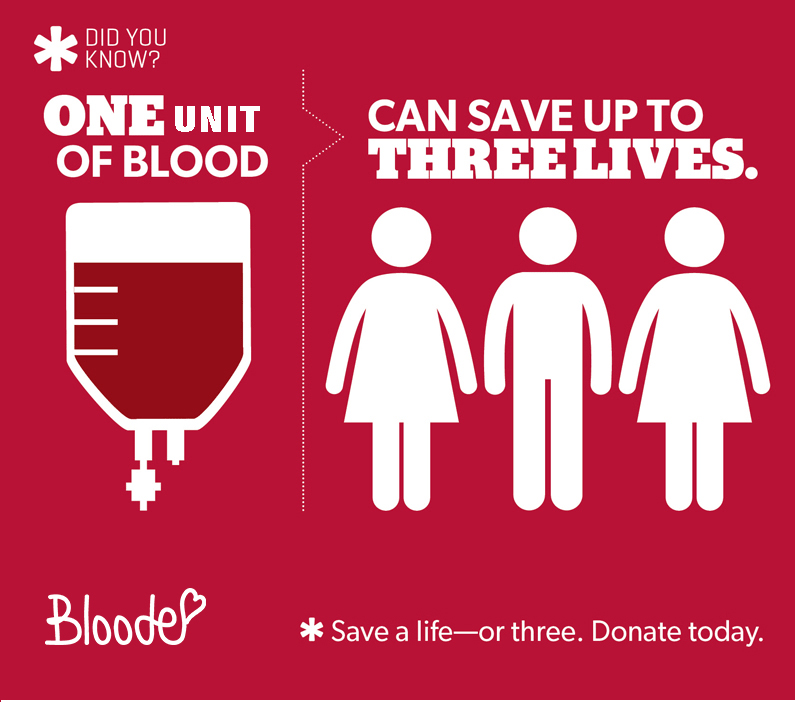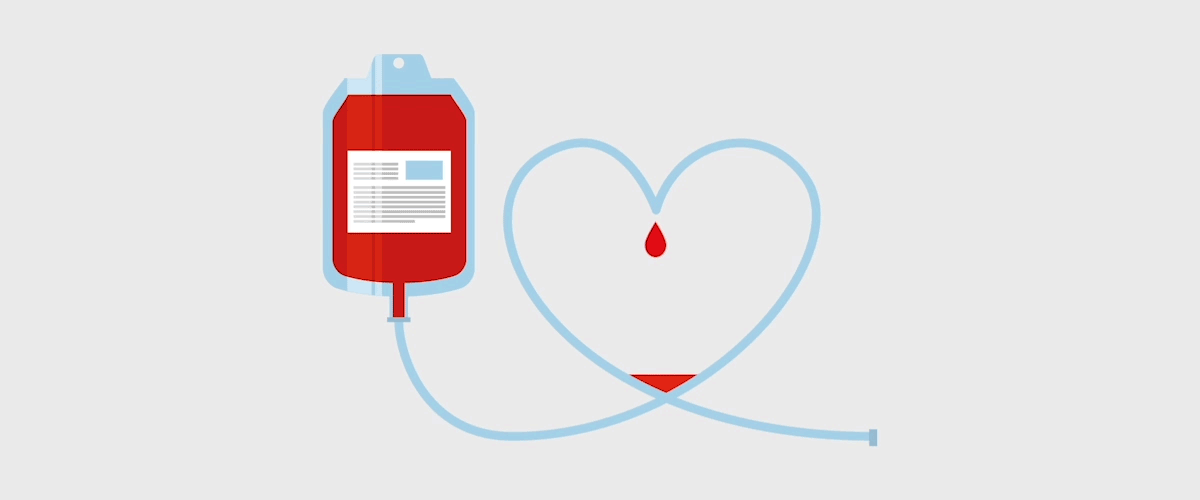
TYPES OF DONATION
The average human body contains about five liters of blood, which is made of several cellular and non-cellular components such as Red blood cell, Platelet, and Plasma.
Each type of component has its unique properties and can be used for different indications. The donated blood is separated into these components by the blood centre and one donated unit can save upto four lives depending on the number of components separated from your blood.
What is it?
It is a mixture of pale yellow coloured fluid called plasma and cells – Red Blood Cells, Different types of White Blood Cells, and platelets.
Who can donate?
Age – 18 to 60 years for first time donor, 18 to 65 years for repeat donors, weight minimum 45 kg, Haemoglobin - 12.5 g/dL. healthy individual
Used For?
Poly-trauma, major blood loss, exchange transfusion
Lasts For?
Whole blood lasts for 35 days, red cells can be stored for 35/42 days depending on anticoagulant/preservative used
How often can I donate?
Males can donate every 90 days (four times in a year), females can donate every 120 days (thrice in a year)
What is it?
It is pale yellow coloured fluid. Plasma contains water up to about 92% while remaining 8% is occupied by protein, carbohydrate, fat, electrolytes, hormones, vitamins etc. amongst other nutrients. It is also a carrier for cells.
Who can donate?
Age – 18 to 60 years, weight minimum 50 kg, Haemoglobin - ≥ 12.5 g/dL, healthy individual
Used For?
Severe burns, shock, liver diseases
Lasts For?
One year at ≤- 30° C
How long does it take?
about one hour
How often can I donate?
Twice a month (24 times in a year)
How does it work?
Plasma is separated from blood in machine and collected in a bag, and rest blood is returned to you
What is it?
Platelets help in clotting of blood thereby help stop bleeding in case of injury.
Who can donate?
Age – 18 to 60 years, weight minimum 50 kg, Haemoglobin - ≥ 12.5 g/dL, platelet count ≥ 1.5 lakh/cmm, and healthy individual
Used For?
Platelets are needed in various cancers (primary or secondary) like leukaemia, or when there is bleeding or fear of impending bleeding in conditions where platelet count is low like dengue fever, leptospirosis etc., bone marrow depression due any reason like chemotherapy, radiotherapy
Lasts For?
Five days (to be stored at 20° to 24° C and in continuous agitation)
How long does it take?
About one hour
How often can I donate?
Twice a month (24 times in a year)
How does it work?
Platelets are separated from blood in machine and are collected in a bag, and rest blood is returned to you
Learn About Donation
| Compatible Blood Type Donors | ||
|---|---|---|
| Patient's Group | Acceptable Alternate Groups | |
| A Rh(D) Positive | O Rh(D) Positive O Rh(D) Negative |
|
| A Rh(D) Negative | O Rh(D) Negative | |
| B Rh(D) Positive | O Rh(D) Positive O Rh(D) Negative |
|
| B Rh(D) Negative | O Rh(D) Negative | |
| AB Rh(D) Positive | A Rh(D) Positive A Rh(D) Negative B Rh(D) Positive B Rh(D) Negative O Rh(D) Positive O Rh(D) Negative |
|
| AB Rh(D) Negative | A Rh(D) Negative B Rh(D) Negative O Rh(D) Negative |
|
| O Rh(D) Positive | O Rh(D) Negative | |

Our Blog




















